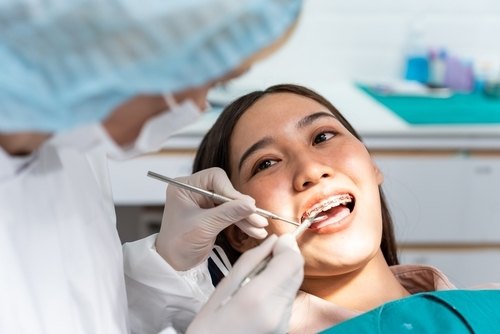
Orthodontic treatment, whether with traditional braces or clear aligners, is a significant step toward achieving a healthier and more attractive smile. However, orthodontic emergencies, while relatively rare, can cause discomfort or disrupt the progress of your treatment if not addressed promptly. Understanding what constitutes an orthodontic emergency, how to manage it and when to seek professional help can make your treatment experience smoother and more enjoyable.
Common Orthodontic Emergencies
Orthodontic emergencies generally fall into two categories: those that cause pain and those that compromise the effectiveness of your treatment.
- Pain and Discomfort:
Mild discomfort is expected when you first get braces or clear aligners, as your teeth and gums adjust to the pressure. However, if you experience sharp pain, it could indicate a problem. For traditional braces, a common cause of pain is a poking wire. These wires can shift, causing them to protrude and irritate the soft tissues of your mouth. Similarly, if a bracket breaks or becomes loose, it can rub against your gums or cheek, leading to discomfort. - Lost or Damaged Appliances:
For those with traditional braces, a broken or loose bracket is a frequent issue. Brackets can detach from teeth if you eat hard or sticky foods or if you sustain a blow to the face. A similar problem can occur with clear aligners; they can crack or become warped, especially if exposed to heat or if used improperly. While clear aligners are removable, losing them or failing to wear them for the required amount of time can also set back your treatment. - Misplaced Wires or Ligatures:
In traditional braces, ligatures (the small rubber bands or wires that hold the archwire to the brackets) can sometimes come off. A displaced wire or ligature might not cause pain immediately, but it can reduce the effectiveness of your braces, delaying your treatment.
How to Handle Orthodontic Emergencies
Handling an orthodontic emergency correctly can prevent further complications and help you stay on track with your treatment.
- Addressing Pain:
If you experience discomfort due to a poking wire, try using orthodontic wax to cover the end of the wire. This will create a barrier between the wire and your mouth’s soft tissues. Over-the-counter pain relievers can also help alleviate discomfort. If a bracket becomes loose but is still attached to the wire, you can temporarily secure it with wax until you can see your orthodontist. - Managing Lost or Damaged Appliances:
If a bracket comes off, try to save it and avoid eating hard or sticky foods until you can visit your orthodontist. For those with clear aligners, if an aligner cracks or becomes damaged, continue wearing it if possible, but contact your orthodontic team immediately for advice. If you lose an aligner, wear the previous set to maintain your progress until a replacement is provided. - Repositioning Wires or Ligatures:
If a wire has shifted out of place, you may be able to gently push it back with a clean pencil eraser. If a ligature comes off, it is best to contact your orthodontist as soon as possible to have it replaced.
The Importance of Seeking Professional Help
While some orthodontic emergencies can be managed at home, it is crucial to seek help from your orthodontic team when necessary. Ignoring a problem or attempting to fix it yourself without professional guidance can lead to prolonged treatment times, additional discomfort or even permanent damage to your teeth and gums.
We Are the Orthodontist Near You
Shirck Orthodontics invites you to schedule an evaluation with our expert orthodontists, Dr. Jeff, Dr. Soo and Dr. Betina. They are highly qualified to help you and your family with all your orthodontic needs. We also have convenient locations near you in Powell, Newark, Westerville, or New Albany and Pataskala, Ohio. Please call us with your orthodontic questions or concerns or to schedule a visit. Your smile will thank you!

